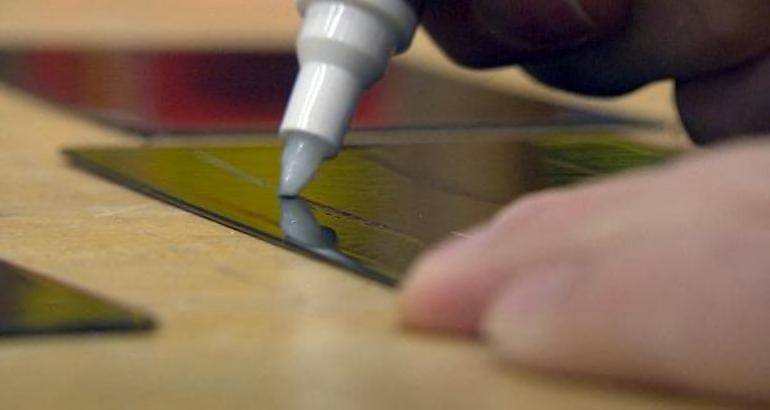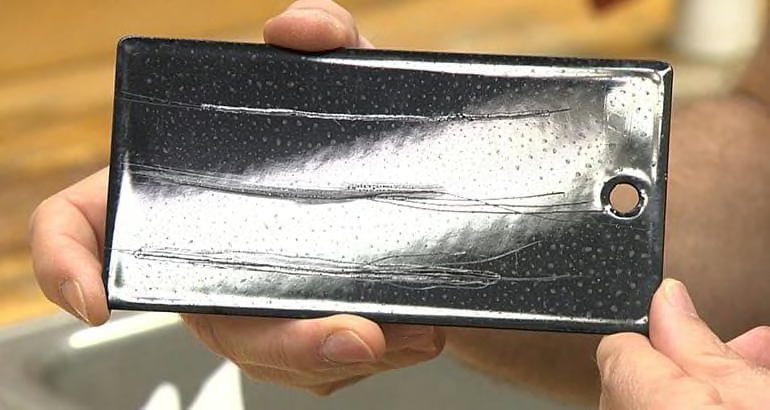On the surface, a scratch repair pen might seem like a great idea. What's not to like about making quick repairs to your car's finish by simply drawing a line along the damage? It turns out, the results aren't always like what you see on TV.
For one thing, our testers found they don't work on anything but minor surface scratches. And, they may make the damage look worse.
More car maintenance and repair tips from Consumer Reports.
Marketed as an easy way to avoid expensive auto body shop bills, manufacturers say that anyone can get professional results from the pens, which cost $10 or less. We sampled three to see if the claims were true.

What We Tested
The Simoniz Fix it Pro ($8), DuPont Pro Fusion Color ($9), and Turtle Wax Scratch Repair Pen ($10) are all widely available online or in auto parts stores. Claimed to work with any color paint, they contain a permanent clear coat much like the protective outer layer used on new cars from the factory. But what their packaging doesn't make entirely clear is that these pens are strictly for surface scratches in the clear coat. If the damage goes into the paint below, you're out of luck.
We also found that the pens can be tricky to use, and that it's not easy to get the thin, even line necessary to neatly fill scratches without overdoing it. With applicator tips that are as wide or wider than a typical scratch, our sampled products make it difficult to avoid applying too much filler, and leaving a visible residue that's more noticeable than the damage you're trying to repair. And getting rid of that residue might require sanding and buffing it out, and potentially some touch-up paint.
As a rule, these products won't help on any scratch that's deep enough to feel with a fingernail, or if you can see primer or bare metal. For that kind of damage, you'll need more than clear filler and a steady hand. The only way to repair damaged paint is with more paint. (Learn more about the colorful world of automotive paint.)

How We Tested
For our evaluation, we used the same lab-grade black test panels we purchase for car wax testing. These panels are painted and clear coated with automotive finishes. We also tried them on two vehicles with light scratches: a silver Toyota Sienna minivan owned by Consumer Reports and an employee's dark blue Honda CR-V.
We made scratches in the test panels with a key and the end of a bolt, and then used the products according to manufacturers directions on both the panels and the pre-scratched vehicles. This involved washing and drying the damaged area, shaking the pen to mix the contents, dabbing the tip on a piece of paper towel to get the product flowing, and carefully drawing the pen along the surface of the scratch. After applying the products, we moved the samples to the roof of our building where they were allowed to weather for four weeks.

The Results
All three of the products filled the scratches, and we saw no appreciable difference between them in either ease of use or effectiveness.
From certain angles, the repairs looked just as good as advertised in the TV ads. But other angles revealed a ridge of very noticeable excess clear coat. The results had the look of an amateur job, at best, and often the repair was far more noticeable than the original scratch. The Simoniz and DuPont products advise wiping off any excess with a paper towel, but we found this only made things look worse, as it smeared the paint across the undamaged surface.
Our advice is to save your money and skip these quick fixes for minor abrasions or try a cleaning polish instead.
In an earlier test, we found the Quixx High Performance Scratch Remover ($15) performed well in our tests, but that requires some elbow grease to rub in a cleaning and later a polishing compound.
For deeper scratches, a visit to the body shop may be your best bet.
















